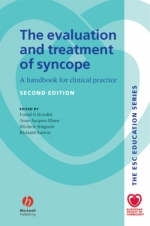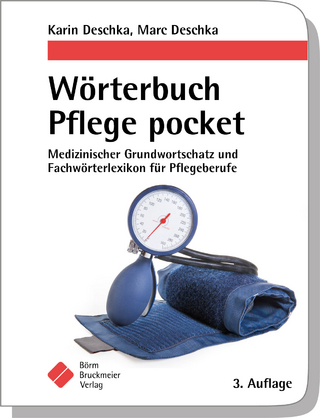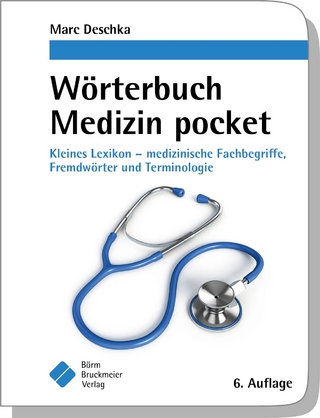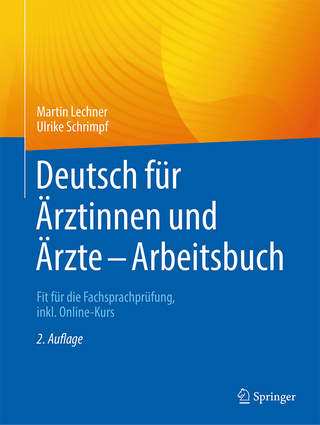
The Evaluation and Treatment of Syncope
Wiley-Blackwell (Verlag)
978-1-4051-4030-0 (ISBN)
- Titel z.Zt. nicht lieferbar
- Versandkostenfrei innerhalb Deutschlands
- Auch auf Rechnung
- Verfügbarkeit in der Filiale vor Ort prüfen
- Artikel merken
Designed for the practitioner, this handbook provides an easy-to-read overview of how to evaluate and treat patients with a history of fainting. The 2nd Edition has been fully revised to contain all the latest information concerning diagnosis and treatment. It is based on the 2004 update of the ESC Guidelines on the Management of Syncope and offers up-to-date direction based on comprehensive analysis.
All chapters share a consistent structure and are concise - only essential references are included. However, each chapter comes with suggestions for further reading and a comprehensive literature source is provided separately at the end of the book and divided into major interest areas.
The ESC Education Series
This book is part of the ESC Education Series. The series is designed to provide medical professionals with the latest information about the understanding, diagnosis and treatment of cardiovascular diseases. Where available, management recommendations are based on the established European Guidelines, which encompass the best techniques to use with each cardiac disease. Throughout the series, the leading international opinion leaders have been chosen to edit and contribute to the books. The information is presented in a succinct and accessible format with a clinical focus.
David G Benditt, M.D. was born in Winnipeg, Canada. He received a B.Sc. degree in Electrical Engineering and an MD degree from the University of Manitoba. Following completion of postgraduate training in Internal Medicine, he moved to Duke University Medical Center in Durham, North Carolina where he completed a fellowship training in cardiology and cardiac electrophysiology. Thereafter, Dr Benditt joined the faculty of the Cardiovascular Division in the Dept of Medicine at the University of Minnesota where he established its training and research program in clinical cardiac electrophysiology. Dr. Benditt is currently Professor of Medicine and Co-director of the Cardiac Arrhythmia Center at the University of Minnesota in Minneapolis. He has been an Established Investigator of the American Heart Association, and President of both the American Heart Association-Minnesota Affiliate and the North American Society for Pacing and Electrophysiology. Dr Benditt has recently been honored with the Pioneer in Pacing and Electrophysiology Award of the Heart Rhythm Society. He is a Fellow of both the American College of Cardiology, the Royal College of Physicians and Surgeons of Canada, and the Heart Rhythm Society. Jean-Jacques Blanc, MD. FESC Professor of Cardiology. Chief Department Cardiology, Brest University. France; Member of the Task Force on Syncope of the European Society of Cardiology. Michele Brignole, MD, FESC Chief of Cardiology Department. Ospedale Riuniti. Lavagna. Italy; Chairman of the Task Force on Syncope of the European Society of Cardiology.
Section one: Definition, pathophysiology, epidemiology. Chapter 1 Syncope: definition, classification, and multiple potential causes.
Jean-Jacques Blanc, David G. Benditt.
Chapter 2 Whatis syncope and whatis notsyncope: the importance of definitions.
J. Gert van Dijk, Adam P. Fitzpatrick.
Chapter 3 Pathophysiology and clinical presentation.
Wouter Wieling, J. Gert van Dijk, Johannes J. van Lieshout, David G. Benditt.
Chapter 4 Maintaining blood pressure while upright: physiology and potential for disturbances to cause syncope.
Christopher J. Mathias.
Chapter 5 Epidemiology and social costs of syncope.
Rose Anne Kenny, Wishwa N. Kapoor.
Section two: Syncope evaluation strategy.
Chapter 6 Overview of recommended diagnostic strategies.
Richard Sutton, Michele Brignole.
Chapter 7 Initial evaluation of the syncope patient.
Antonio Raviele, Paolo Alboni.
Chapter 8 The role of the prepared questionnaire in initial evaluation of transient losses of consciousness.
Anna Serletis, Robert S. Sheldon.
Chapter 9 Who should be evaluated and treated in hospital, and who can be managed as an outpatient?.
David G. Benditt.
Chapter 10 Organizing management of syncope in the hospital and clinic (the syncope unit).
Rose Anne Kenny, Michele Brignole.
Chapter 11 Impact of syncope guidelines on clinical care.
Michele Brignole.
Section three: Specific diagnostic procedures.
Chapter 12 Ambulatory electrocardiographic monitoring for evaluation of syncope.
Adam P. Fitzpatrick, David G. Benditt.
Chapter 13 Hemodynamic sensors: the future evaluation of syncope.
David G. Benditt.
Chapter 14 The basic autonomic assessment.
Richard Sutton, David G. Benditt.
Chapter 15 Electrophysiological testing.
Fei Lü, Lennart Bergfeldt.
Chapter 16 Miscellaneous diagnostic procedures: when are they indicated?.
Lennart Bergfeldt, Piotr Kulakowski.
Chapter 17 Neurologic diagnostic procedures in syncope.
J. Gert van Dijk.
Chapter 18 Contribution of psychiatric disorders to apparent syncope.
George Theodorakis.
Section four: Causes of syncope and syncope mimics, and treatment.
Chapter 19 Who to treat.
Michele Brignole, Rose Anne Kenny.
Chapter 20 Specific causes of syncope: their evaluation and treatment strategies.
Part 1 Neurally mediated reflex syncope.
David G. Benditt, Jean-Jacques Blanc.
Part 2 Orthostatic syncope.
Angel Moya, Wouter Wieling.
Part 3 Cardiac arrhythmias and conduction system disease as a primary cause of syncope.
Angel Moya.
Part 4 Structural cardiac and pulmonary causes of syncope.
Jean-Jacques Blanc, Jan Janousek.
Part 5 Cerebrovascular disorders as the primary cause of syncope.
J. Gert van Dijk.
Chapter 21 Syncope and other causes of transient loss of consciousness in children, teenagers, and adolescents.
Wouter Wieling, Karin S. Ganzeboom, Jan Janousek.
Chapter 22 Syncope in the older adult (including driving implications).
Rose Anne Kenny, David G. Benditt.
Chapter 23 Conditions that mimic syncope.
J. Gert van Dijk.
Section five: Selected references since 1990.
Index
| Erscheint lt. Verlag | 20.3.2006 |
|---|---|
| Reihe/Serie | European Society of Cardiology |
| Verlagsort | Hoboken |
| Sprache | englisch |
| Maße | 160 x 240 mm |
| Gewicht | 721 g |
| Themenwelt | Medizin / Pharmazie ► Allgemeines / Lexika |
| Medizin / Pharmazie ► Medizinische Fachgebiete | |
| ISBN-10 | 1-4051-4030-5 / 1405140305 |
| ISBN-13 | 978-1-4051-4030-0 / 9781405140300 |
| Zustand | Neuware |
| Haben Sie eine Frage zum Produkt? |
aus dem Bereich


